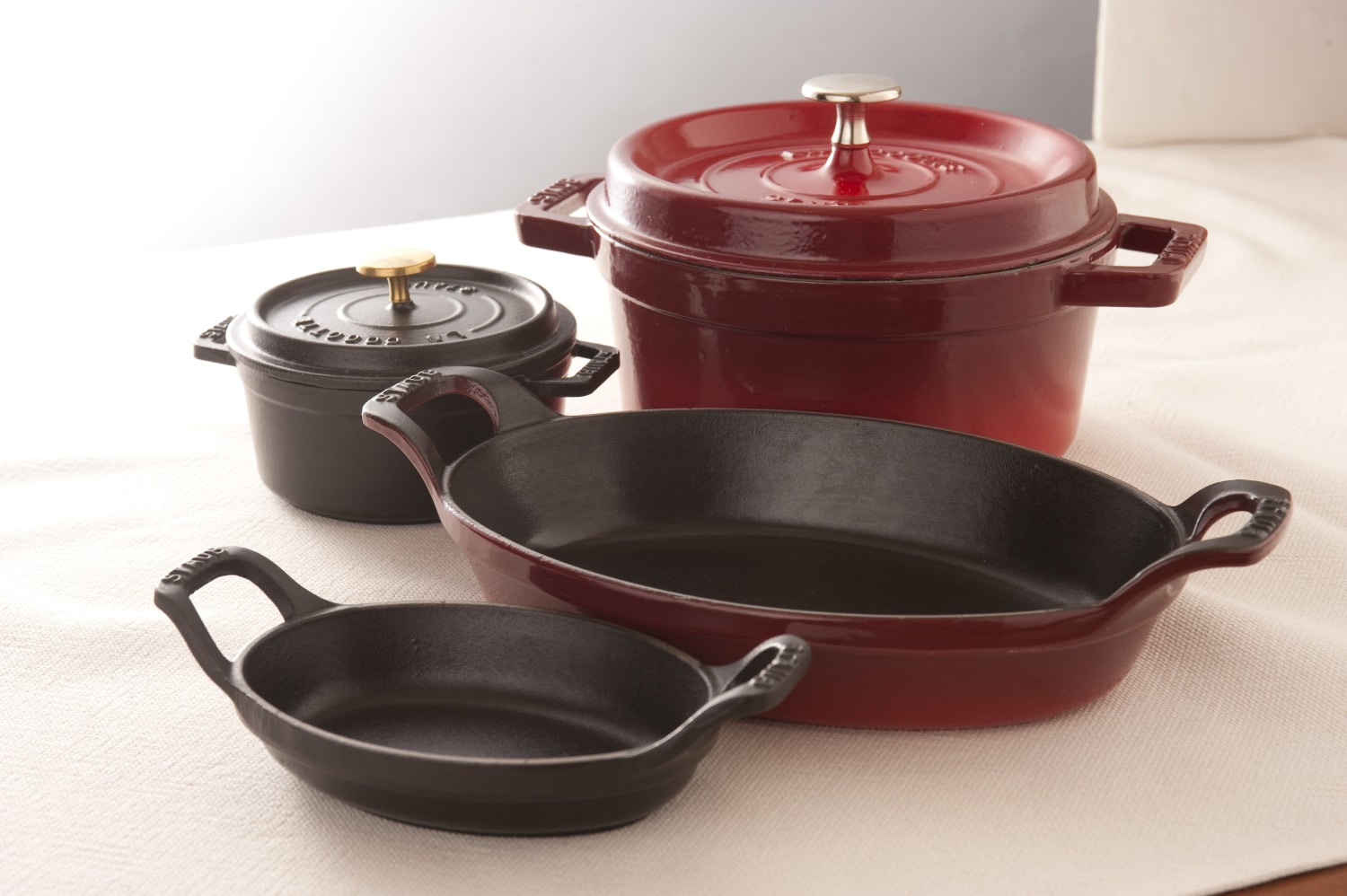The Dutch oven is a legendary, thick-walled pot that can be used technically for every cooking technique. Since it is naturally thick-walled, it can withstand far higher temperatures and is the perfect cookware for slow-cooking.
What Material Is a Dutch Oven Made Of?
The traditional Dutch oven is often manufactured with cast iron. However, some manufacturers now use cast aluminum instead of cast iron because it’s lighter, and it also has an impact on how much you’re going to pay.
If you see a Dutch oven with an outer enamel layer, then that pot is likely marketed as a French oven and not a Dutch oven.
In the United Kingdom, Dutch ovens are more likely to be called casserole dishes precisely because they are used primarily for making stews and casseroles that require low temperatures and long hours of cooking time.
In France, the Dutch oven is called the cocottes. The concept of the Dutch oven has been around for centuries. It first made an appearance in the seventeenth century.
A Netherland native called Abraham Darby was said to have studied the Dutch techniques in manipulating and forging brass, which led him to start a metal mill of his own. Darby eventually experimented with different molds, including those filled with sand, and the Dutch oven was born.
Is Enameled Cast Iron the Same as Ceramic?
Yes, enameled cast iron Dutch ovens and ceramic Dutch ovens are the same. The difference lies only in the marketing terms used. The end-point of these modern Dutch ovens is they have vitreous glass as the top layer, and this extra glass layer prevents the cast iron body of the Dutch oven from rusting due to exposure to moisture and ingredients. There’s nothing wrong with buying a standard Dutch oven in terms of value, but you have to be ready to perform maintenance on it when there is a need to season the metal.
There are some factors to consider if you are deciding between standard cast-iron Dutch ovens and the modern enameled variety. The first factor to consider is the price. The modern ones tend to be more expensive, and why not? They look better than their classical counterparts. However, the standard cast-iron Dutch ovens without the vitreous glass layer offer higher durability when it comes to surface durability because the cast iron doesn’t have a cover. Nothing would crack or chip as a result.
When it comes to design, the modern Dutch ovens often have the edge over the more traditional-looking Dutch ovens because they come in many colors and sizes. If you run a modern kitchen that is color-coded or if you are just fond of cookware with a ton of color, then the enamel-covered ones are likely to catch your eye.
On the other hand, if you don’t pay much attention to color and you are drawn to the traditional cookware just because they look so much more dependable, then, by all means, go for the Dutch ovens that don’t have an extra enamel layer.

